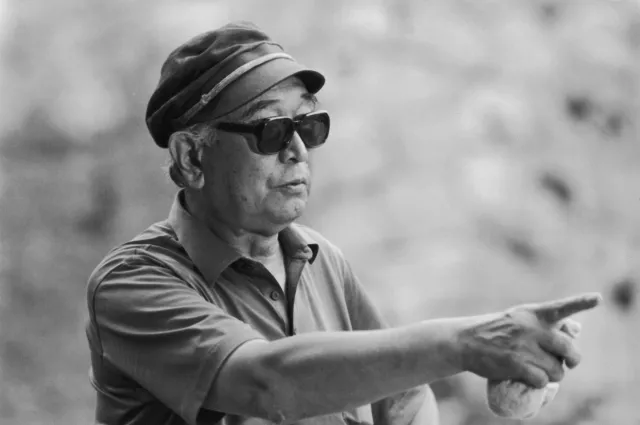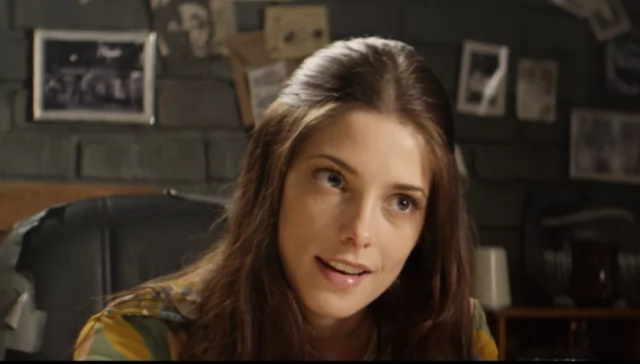Quick Facts
| Net Worth | Not Known |
| Salary | Not Known |
| Height | Not Known |
| Date of Birth | Not Known |
| Profession | Filmography |
Akira Kurosawa is best known as a screenwriter and director. His career spanned for over 57 years, beginning in 1943. Within this time, he wrote and directed a lot of notable movies. The first known Akira Kurosawa movie was a feature film titled Sanshiro Sugata. Fortunately, Sanshiro Sugata was a huge success. He is one of the few international acclaimed directors from Japan. He is regarded as a legend and some even go as far as calling him an ‘Emperor.’
His style and deft in directing have had its influence on the movie industry at large including Hollywood films. Some of his most notable works include Seven Samurai, Yojimbo, Ikiru, Rashomon, Dodeskaden, Dersu Uzala, Ran, Sanjuro, The Idiot and Throne of Blood. The iconic Japanese film director died on September 6, 1998., leaving behind a huge body of work for which he will always be remembered for.
Akira Kurosawa Movies and TV Shows – Best to Worst
Seven Samurai (1954)
This movie is still regarded as a masterpiece even after 50 years of its release. It is also regarded as a gamer changer for Akira Kurosawa’s movie career as well as the world of cinema. According to critics every piece of the film fits perfectly. It is a colorful display of directorial quintessence.
The movie is about a group of Samurai who come together to defend a defenseless village from an exploitative warlord, who intends to milk the villagers of all they are worth. The manner in which Akira tells the story has been applauded by many even by Hollywood as it inspired the famous remake in 1960 titled The Magnificent Seven. A total of 60 critics on Rotten Tomatoes gave the movie a 100% rating indicating its exceptionality. The audience also found it entertaining and worthwhile as the rated it 97%. It grossed $2.3 million at the box office worldwide and is regarded as a commercial success.
Ikiru (1952)
This is another powerful story told and delivered creatively by Akira Kurosawa. It is a story of Kanji Watanabe, a salaryman whose life on earth is to be cut short by a terminal disease. Watanabe decided to make the most of his remaining life by creating a children’s playground from what used to be an infested cesspool. The movie is hinged on the truism that life should be lived to the fullest.
Ikiru‘s cast includes Takashi Shimura and Miki Odagiri. The movie was a huge critical success during and after its release. It also recieved a 100% rating on Rotten Tomatoes like Seven Samurai. The movie earned Akira Kurosawa a couple of awards such as the Berlin International Film Festival Awards for Special Prize of the Senate of Berlin and Kinema Junpo for best film.
Rashomon (1950)
Have you ever heard of the Rashomon Effect? This was coined from this 1950 blockbuster film directed by Akira Kurosawa with the title, Rashomon. The movie not only introduced the director to international fame but it also created a vastly new and foreign audience for the Japanese film media. Rashomon is centered on four characters who tell the same occurrence through their varying perspectives.
The filmmakers left the audience questioning the nature of truth, motivation, interpretation, and recollection. The movie won Kurosawa an award (Golden Lion) at the Venice Film Festival and two honorary Oscars (1951 and 1952). Its ensemble cast includes Toshiro Mifune, Machiko Kyō, Masayuki Mori, and Takashi Shimura.
It was a huge critical success as made evident through its ratings and reviews. On Rotten Tomatoes, it was rated 98% by critics and given a 97% approval rating by the audience.
Throne of Blood (1957)
Said to be a blend of Western and Eastern traditions, Throne of Blood is arguably one of the best films ever directed by Akira Kurosawa. It was inspired by Shakespeare’s Macbeth. The character most similar to that of Macbeth was excellently delivered by Toshiro Mifune who starred alongside Isuzu Yamada and Takashi Shimura.
This film is said to have had one of the most iconic death scene ever shot. Its powerful and compelling story earned it accolades from critics and audiences worldwide. On Rotten Tomatoes, it had a critical approval rating of 98% based on 42 reviews and an 8.1/10 audience rating on IMDb.
The Bad Sleep Well (1960)
This Akira Kurosawa movie is a tale of vendetta. A man climbs the corporate ladder to the top just to expose the company for what it truly is and avenge the death of his father. Even after over 50 years, this storytelling technique is still relevant. In short, it was another masterpiece from Akira Kurosawa and was praised by a lot of critics including newspapers and other professional reviewing bodies.
Rotten Tomatoes critics applaud the movie with a 100% rating while its audience consisting of over 5,000 reviews scored the movie at 92%. A real gem indeed.
The Hidden Fortress (1958)
Toshiro Mifune, regarded as Akira Kurosawa’s partner in crime, has appeared on 16 of his movies and this is one of them. Again delivering an apt interpretation of his character, The Hidden Fortress is notable for its shift in narration focalization. It tells its story from the eyes of two of the lowliest character in the film. This narration style was a big influence on the storytelling style used in the 1977 Star Wars movie.
Like most of Akira Kurosawa’s movies, this is also critically acclaimed. It has been rated 97% on Rotten Tomatoes based on 31 reviews. It also has the approval of a large percentage of the audience as seen through its 93% audience rating on the same platform.
The movie also stars Misa Uehara, Minouri Chiaki, and Kamatari Fujiwara, alongside Toshiro Mifune. It won the Silver Bear for Best Director at the 9th Berlin International Film Festival in 1959.
Yojimbo (1961)
Regarded as one of Akira Kurosawa’s effortless masterpieces, Yojimbo is a story about a classless samurai cut up in a world of two warring crime lords, each seeking his services as their bodyguard. This superb movie has inspired a few movies from Hollywood producers including Miller’s Crossing (1990) and Last Man Standing (1996).
Yojimbo stars Toshiro Mifune, Tatsuya Nakadai, Yoko Tsukasa, Isuzu Yamada, Daisuke Katō, Takashi Shimura, among others. As expected, it was a critical success with several positive reviews. Critics on Rotten Tomatoes gave the movie a 95% rating while the audience gave it an approval rating of 96%.
Sanjuro (1962)
This funny, action-packed samurai adventure spiced with outstanding cinematography and a charismatic performance is one of the best works from Akira Kurosawa. It is also a sequel to Yojimbo. It featured Toshiro Mifune, Tatsuya Nakadai, Keiju Kobayashi, and Yūzō Kayama. This sword fight and martial arts movie is centered on a ronin, played by Toshiro Mifune, who is saddled with overthrowing a corrupt lord.
It had mostly positive reviews from critics and audiences alike. On Rotten Tomatoes, it got a 100% critical rating and scored 95% on audience approval rating.
Ran (1985)
Ran is yet another adaptation from the prolific works of Shakespeare. This time it is King Lear. A King sends his good son away leaving two others behind who turn the once peaceful kingdom to chaos. Ran is one of Akira’s critically acclaimed movies. It is best known for its intriguing use of color, landscape and cinemascope frame.
Amazingly, Akira shot this film while in failing health and at the age of 75. On Rotten Tomatoes, the movie was scored 96% by critics and 95% by the audience, indicating a huge critical and cinematic success.
Red Beard (1965)
Red Beard starred Japanese stars like Toshiro Mifune and Yūzō Kayama and was one among the long list of Akira Kurosawa’s hit movies. The movie was centered on two of the directors’ favorite ideologies, humanism, and existentialism. It specifically bordered on social justice. It tells a story of a tyrannical yet compassionate town doctor and his arrogant young trainee. It was set in a hospital.
This Akira Kurosawa’s movie marked the last collaboration between Akira and Mifune and was also the last of the director’s film shot in black and white. Its critical ratings were good. Roger Ebert gave the movie a 4/4 rating while describing it as ‘a long and deliberate film…that should be seen by every medical student.’
I Live in Fear (1955)
This Akira Kurosawa’s movie is said to be more compelling in contemporary times as now, because of the worldwide knowledge of what it means to live in constant fear of wars, terrorist attacks and similar horrors that plagues us. I Live In Fear is a movie about Japan – a scarred nation that is just emerging from the claws of the fear of a nuclear war and World War II. The movie tells the story of Japan through an elderly factory owner who is increasingly afraid of imminent nuclear war and decides to move this family to Brazil where he thinks it is safer.
This film stars the likes of Toshiro Mifune and Takashi Shimura. It recorded an above-average but not enough to be critically acclaimed ratings. On Rotten Tomatoes critics gave it a 73% rating while those on Letterboxd scored it 3.5/5
The Idiot (1951)
The Idiot is a film adapted from a novel by the famous writer, Feodor Dostoyevsky. It is centered on some characters who are all victims of the war in one way or the other. The Idiot is a nickname given to a man who suffers from post-traumatic stress-induced seizures due to his experiences from the war. It was originally a four and a half hour movie which was cut to two by Toho studios leading to an almost unintelligible narrative that relied heavily on title cards to gap the story holes that were left behind.
The movie was another fine postwar movie from Akira Kurosawa but not one of his best. It managed to garner above-average critical ratings. It scored 70% on Rotten Tomatoes based on 10 reviews and 3.5/10 on Letterboxd. It has an audience approval rating of 73% and 7.3/10 on Rotten Tomatoes and iMDb respectively.
The Men Who Tread on the Tiger’s Tail (1945)
This film was written in one day and was produced on stage. It is a 60 minutes film that tells the story of Japanese soldiers trying to get through enemy blockades by disguising as monks. It was produced and released during the last days of the second world war – when finances for film production were at its lowest.
Despite being somewhat of a drag, The Men Who Tread on the Tiger’s Tail was a good film with fair ratings. Although it was rated 88% by critics on Rotten Tomatoes, it didn’t do so well on other reviewing websites. Audience ratings include 59% and 6.7/10 as seen on Rotten Tomatoes and IMDb respectively.
The Most Beautiful (1944)
This Akira Kurosawa film follows the story of a group of girls who work at a factory where they manufacture lenses for weapons. This was their way of aiding their country (Japan) in the war. The Most Beautiful is not one of Akira’s favorite films but is one of his most memorable as it is on this set that he met his wife who stayed with him until her death.
The movie has been described as sappy and lacking objective truth, a rarity among Akira Kurosawa’s movies. It had poor ratings both from critics and the audience. On Mubi, it was rated 2.8/5 by critics and on IMDb, it has an audience approval rating of 5.7.
Sanshiro Sugata II (1945)
Sometimes a sequel is not necessary, this is one of those times. Sanshiro Sugata was an incredible movie but the same can’t be said about its sequel. It continues the tale from its original film about a Judo master and his adventures. The movie stars Susumu Fujita, Denjirō Ōkōchi and Kokuten Kōdō.
This film has been described as uncharacteristically dull and flat. It is also said to have magnified the flaws of the original production. It was a critical flop, scoring 3/5 on Mubi and 2.8/5 on Letterboxd.
Top 3 Richest Filmography
Also Read: Top 10 Richest People in the world with full biography and details.




